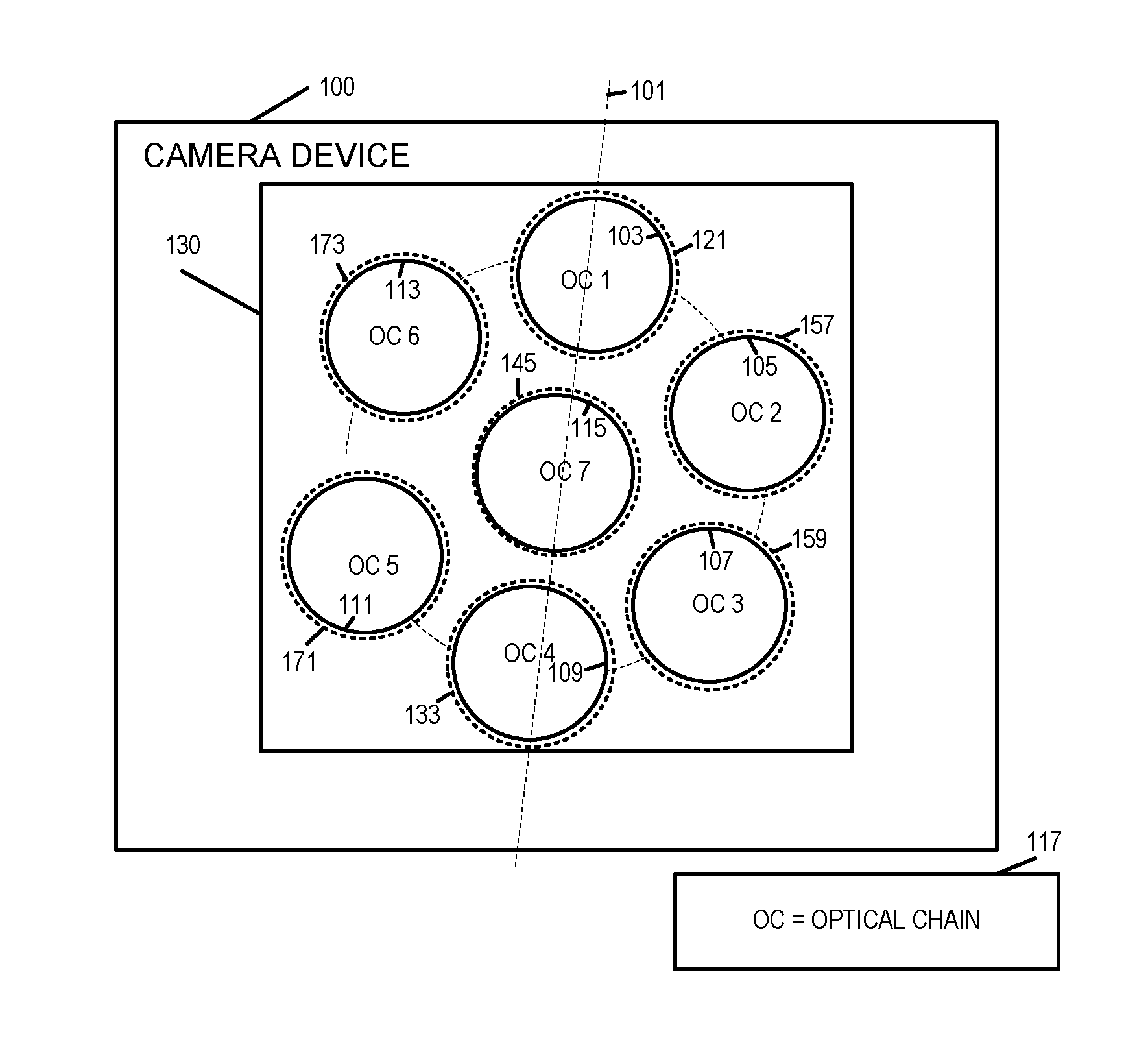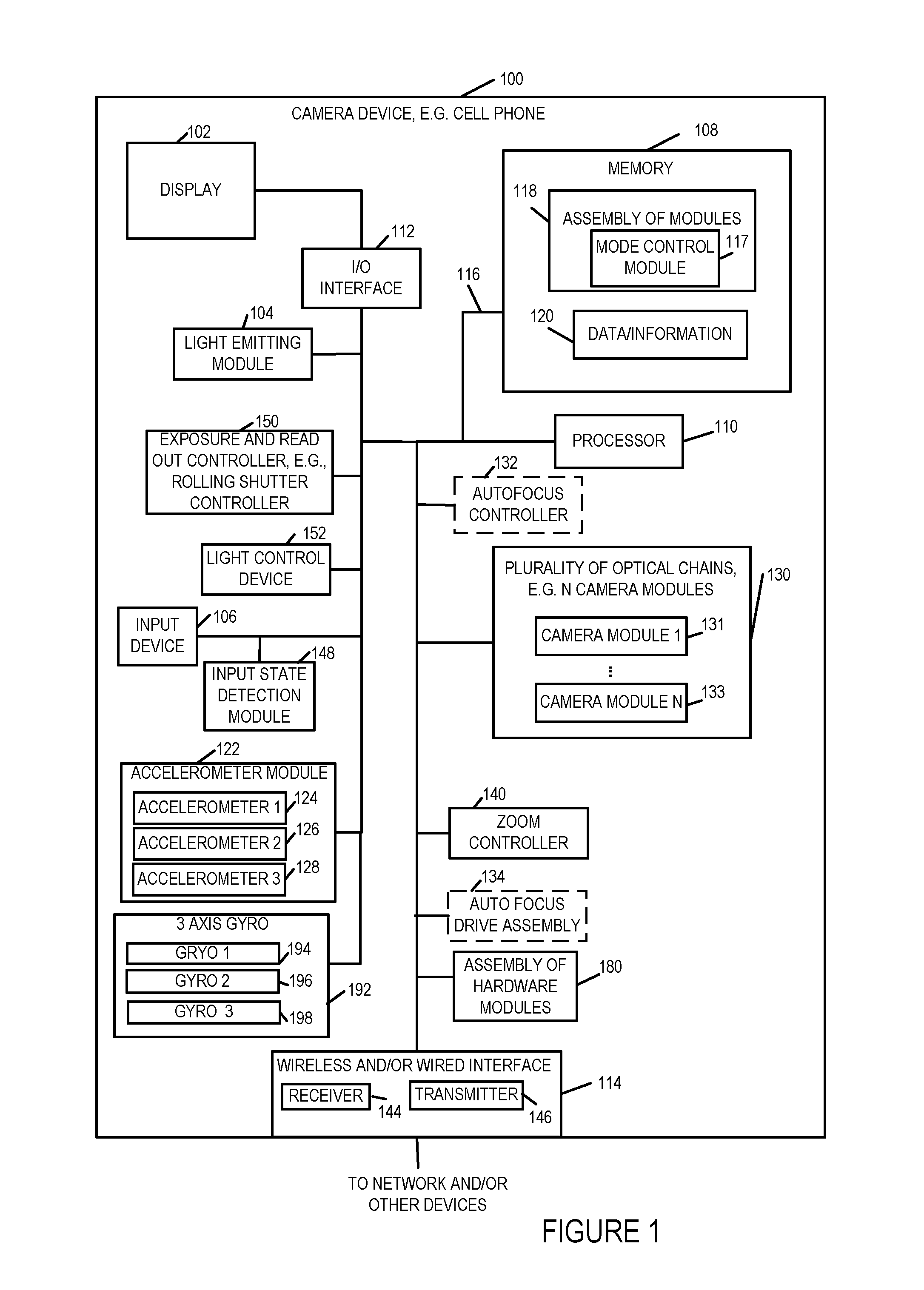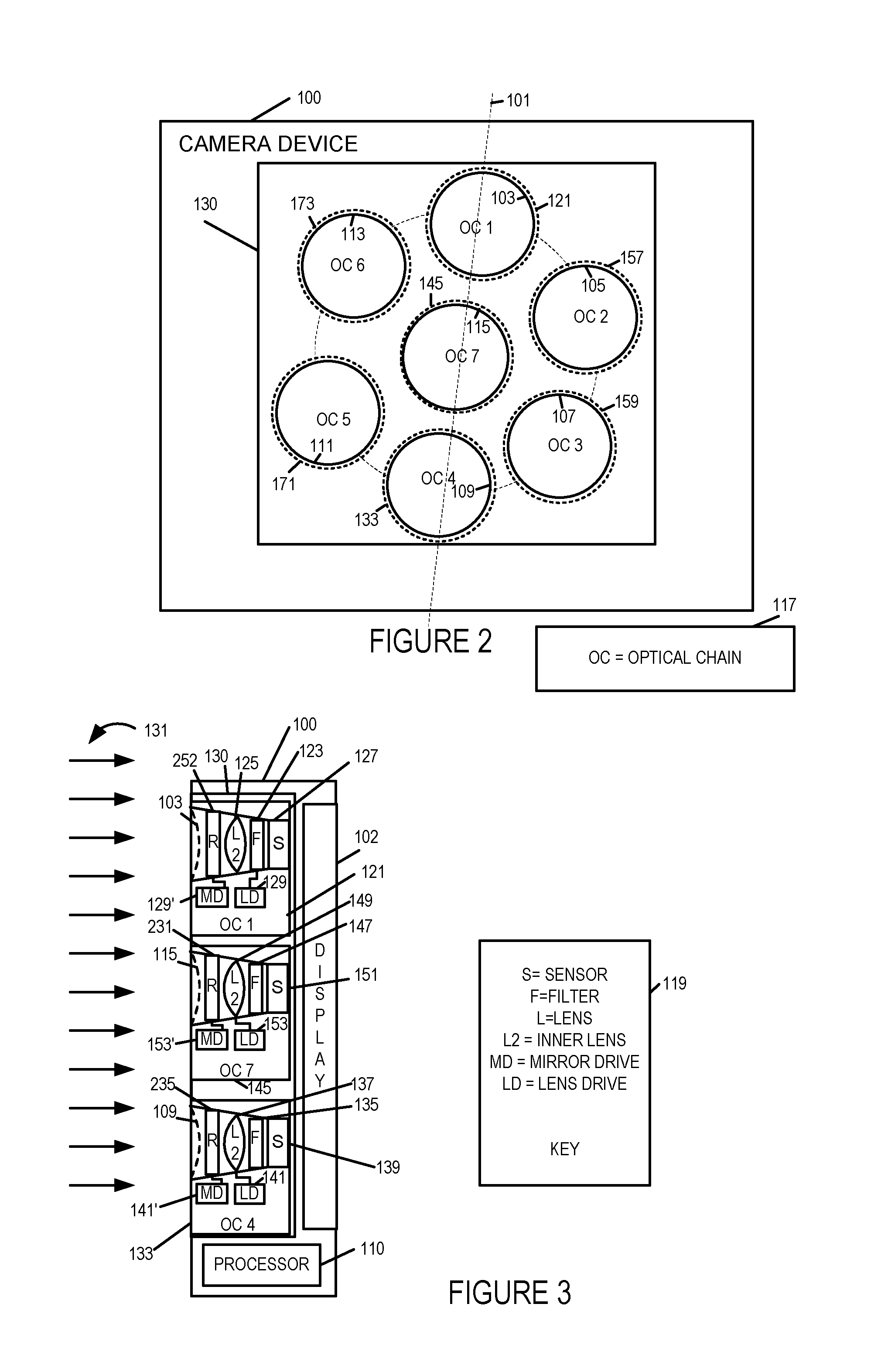Methods and apparatus for supporting burst modes of camera operation
a technology of camera operation and burst mode, which is applied in the field of methods and apparatus for supporting burst mode of camera operation, can solve the problems of reducing the effective quality of the photograph generated, increasing the noise in the image, and reducing the memory cos
- Summary
- Abstract
- Description
- Claims
- Application Information
AI Technical Summary
Benefits of technology
Problems solved by technology
Method used
Image
Examples
Embodiment Construction
[0057]FIG. 1 illustrates an exemplary camera device 100 such as a digital camera, notepad with camera functionality, or cell phone with camera functionality, implemented in accordance with one exemplary embodiment of the present invention. The camera device 100, in some embodiments, is a portable device. In other embodiments, the camera device 100 is a fixed device such as a wall mounted camera.
[0058]FIG. 1 illustrates the camera device 100 in block diagram form showing the connections between various elements of the apparatus 100. The exemplary camera device 100 includes a display device 102, a light emitter module 104, an input device 106, an input state detection module 148, an exposure and readout controller 150, e.g., a rolling shutter controller 150, a light control device 152, memory 108, a processor 110, a hardware assembly of modules 180, a wireless and / or wired interface 114, e.g., a cellular interface, a Wi-Fi interface, and / or a USB interface, an I / O interface 112, an ac...
PUM
 Login to View More
Login to View More Abstract
Description
Claims
Application Information
 Login to View More
Login to View More - R&D
- Intellectual Property
- Life Sciences
- Materials
- Tech Scout
- Unparalleled Data Quality
- Higher Quality Content
- 60% Fewer Hallucinations
Browse by: Latest US Patents, China's latest patents, Technical Efficacy Thesaurus, Application Domain, Technology Topic, Popular Technical Reports.
© 2025 PatSnap. All rights reserved.Legal|Privacy policy|Modern Slavery Act Transparency Statement|Sitemap|About US| Contact US: help@patsnap.com



